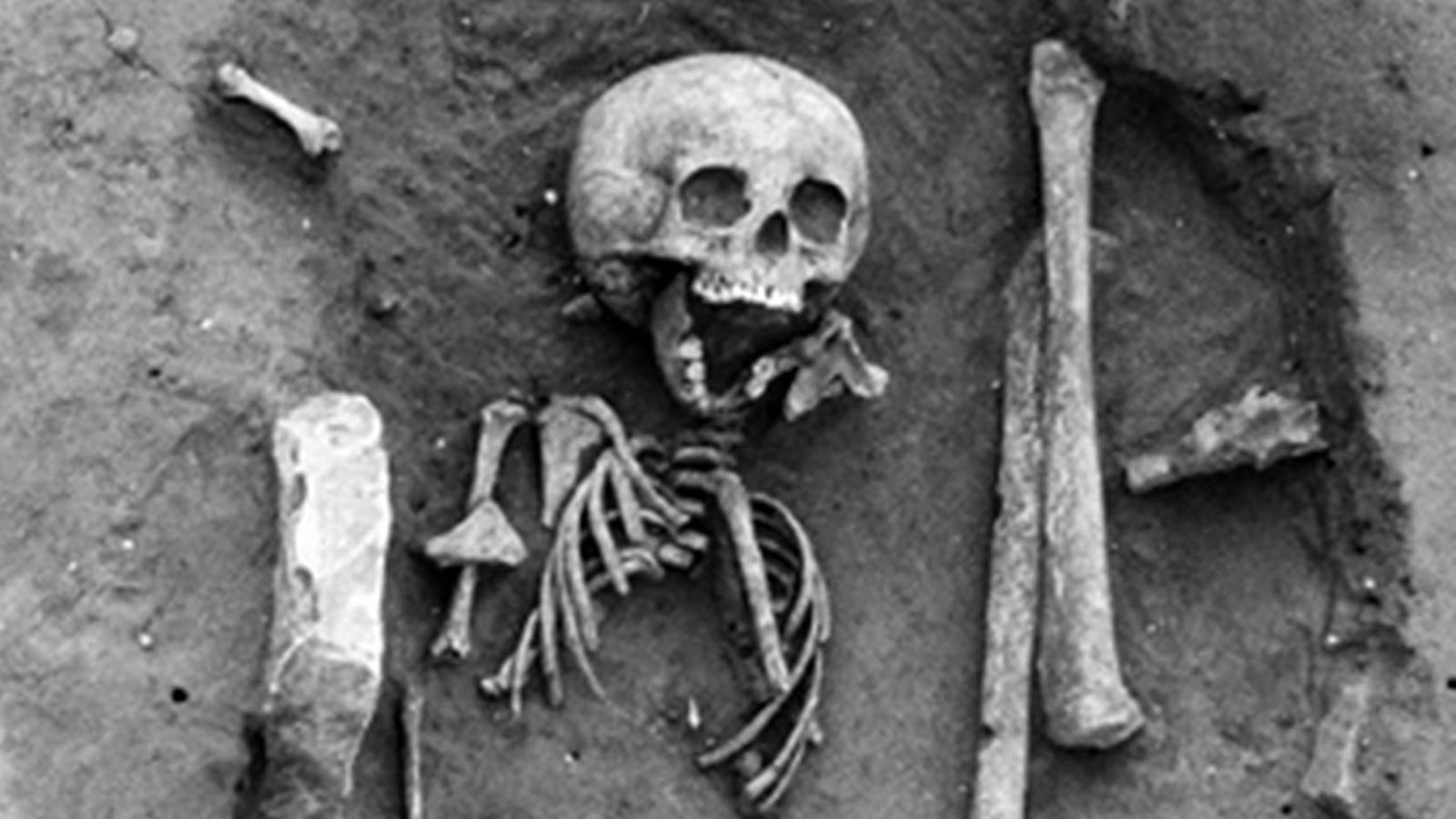A recent study in the International Journal of Paleopathology revealed a 5th- or 6th-century AD skull found in the French town of Saint-Jean-des-Vignes is likely that of a child with Down syndrome. This 5- to 7-year-old child is now the earliest person known to have Down syndrome. Interestingly, the study noted that the burial and funerary ornamentation of the child weren’t substantially different from those of the other people at the burial site.
“Thus, the Saint-Jean-des-Vignes child enables us to infer that this Down syndrome child was not treated differently at death than others in the community. We interpret this as meaning that the child was maybe not stigmatized during life, the first time a Down syndrome individual has been so viewed in the context of the ancient community,” the authors write. “[Unlike] previous published cases, the archaeological context is well known here, and provides evidence that this child was treated like the healthy members of the community.”
“Healthy” can’t be the appropriate word (the study’s authors do not speak English as a first language). People with Down syndrome can be healthy. Even when a skeleton displays no evidence of disability, it might have been the scaffolding for an unhealthy body. The remains were discovered, after all, in a burial ground. Presumably some of the occupants weren’t in tip-top shape when they went the way of all flesh.
So how much can bones really tell us about how someone lived? Many of us certainly want it to be true that this child was treated with the same respect and dignity that was granted to others in community. The evolutionary biologist and paleontologist Stephen Jay Gould once wrote, “We yearn to know how and when those distinctively human traits of cognitive ability and moral decency entered our history. We wish, in short, to disinter the ‘good’ that lies with these bones. But goodness doesn’t fossilize.”

Katherine Dettwyler, a professor of anthropology at the University of Delaware, told The Daily Beast that “a community’s compassion can never be inferred from burials.” There are too many other possible explanations, she pointed out. We don’t know the health or social status of the other remains. Some people with disabilities can be highly functional, so their inclusion in the community is not an act of moral decency. Or the person may have been sustained, but mercilessly mocked and shunned in life.
The revelation about Saint-Jean-des-Vignes child highlights the difficulty in discovering historical facts about the lives of people with intellectual disability. There are many written descriptions of physical disabilities, epilepsy, and mental illness from all eras. There is comparatively little mention in the historical record of people with intellectual disabilities, especially before the 16th century. Scholars have tried to identify depictions of people with Down syndrome in artworks (for example here and here), but concrete references are few and far between.
There are a couple of possible reasons for the historical silence. First, there may have been fewer people with intellectual disability than there are now. Down syndrome and other chromosomal rearrangements are often accompanied by improperly functioning organs and immune systems. In eras when childhood mortality was already high, it may have been the rare person with Down syndrome who survived early childhood.
Second, they may not have been seen as especially disabled. All cultures have different understandings of the importance of disability. For example, in Chilmark, a town on Martha’s Vineyard, there were an unusually high number of deaf people from the 17th century to the 20th. Most families had at least one deaf member. The town developed a sign language that everyone in the town used, deaf or not. Hearing people used sign language even when there was no deaf person present. When asked, the townspeople with hearing did not consider deafness a disability at all.
Similarly, it may be the case that so long as people with intellectual disability were functional enough and able to care for themselves as part of a household, they did not seem disabled to their community.
Before I began reading about the history of intellectual disability, I had a vague notion that people with intellectual disabilities were treated more or less horribly until sometime around 1990, when the Americans with Disabilities Act was signed into law. (That is, when I thought about it at all—which wasn’t often.) I had vague images of infants exposed on mountaintops, shrieking inmates shackled in filth-ridden Elizabethan dungeons, and mid-20th-century people forgotten and staring blankly, slumped on soul-sapping linoleum floors under unforgiving buzzing fluorescent light.
The truth is more complicated. The moral arc of the universe may indeed bend toward justice, in disability as in race, gender, and class—but that arc doesn’t flow smoothly: It contains many hills and valleys.
Ancient Spartans did indeed kill disabled infants. In fact, they had a state-sponsored eugenics program in which a council to determine its deviation from the norm inspected each infant. Any infant deemed defective by the council was tossed off a cliff. Neighboring city-state Athens was more haphazard about its infanticide. However, Plato and Aristotle each called for the exposure of feeble infants. Relatedly, they also each advocated a position that has remained popular with many philosophers down to the present day: that one of the most valuable qualities a person has—or the only valuable quality a person has—is rationality.
It would be lovely if the mistreatment of people with intellectual disabilities was peculiar to Ancient Greece, but of course it wasn’t. Yet it is less well known that there are cultures in which people with intellectual disabilities were treated with respect, or at least benevolence. A fascinating article recently described a town in Belgium with a centuries-old tradition of community care for people with mental illness. In the same era in which Shakespeare famously described the tale told by an idiot as being “full of sound and fury, signifying nothing,” the Spanish royal court in the 16th and 17th centuries adopted and raised children with disabilities of all sorts, physical and intellectual. When the children reached adulthood, they were given positions at court. If they were unable to perform any available job, they served as dignified attendants.
In early to mid-19th century America, people with intellectual disabilities were included in the community and often educated. It was not until later in that century that the era of asylums dawned.
Maïté Revollat, the lead researcher of the study of the Saint-Jean-des-Vignes child, dialed back from the wording in the study, saying in an email to The Daily Beast that it is “absolutely not justified to make a parallel with burial conditions and life.” There was no evidence on the skull of any injury prior to the child’s death. The child’s teeth did exhibit signs of malnutrition, “but 85 percent of the Saint-Jean-des-Vignes individuals have the same feature,” said Revollat.
While we can’t get a firm handle on the health and cognitive functioning of many of the other bodies in that burial mound, we know the Saint-Jean-des-Vignes child did have some degree of intellectual disability. Therefore, we can at least infer that the people of Saint-Jean-des-Vignes did not have a rigorous eugenics program like Sparta. Not a high bar for disability rights, but it’s something. The inference that the child was treated as an equal in the community is unwarranted. But there is also no reason to think the child was ostracized or abused. The happinesses, sufferings, accomplishments, and social lives of people with intellectual disability in the past remain frustratingly elusive.





